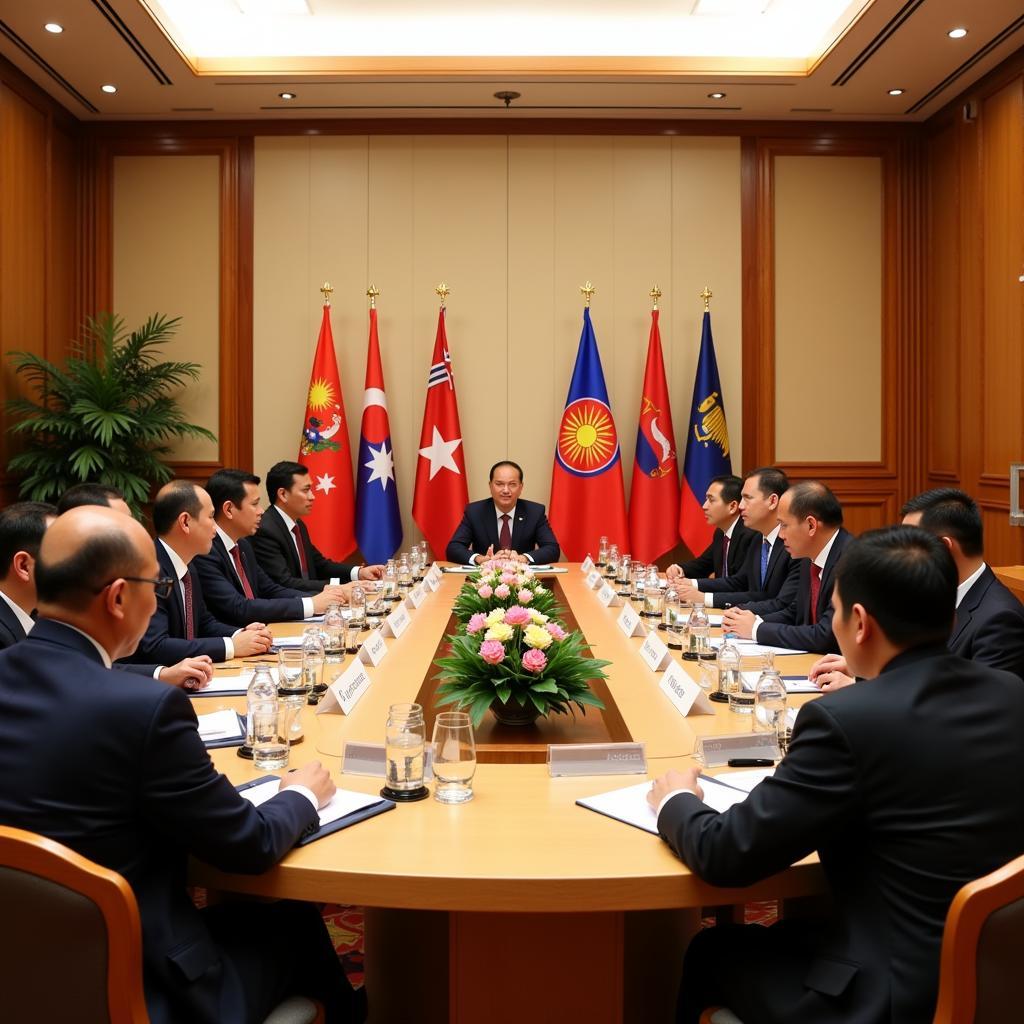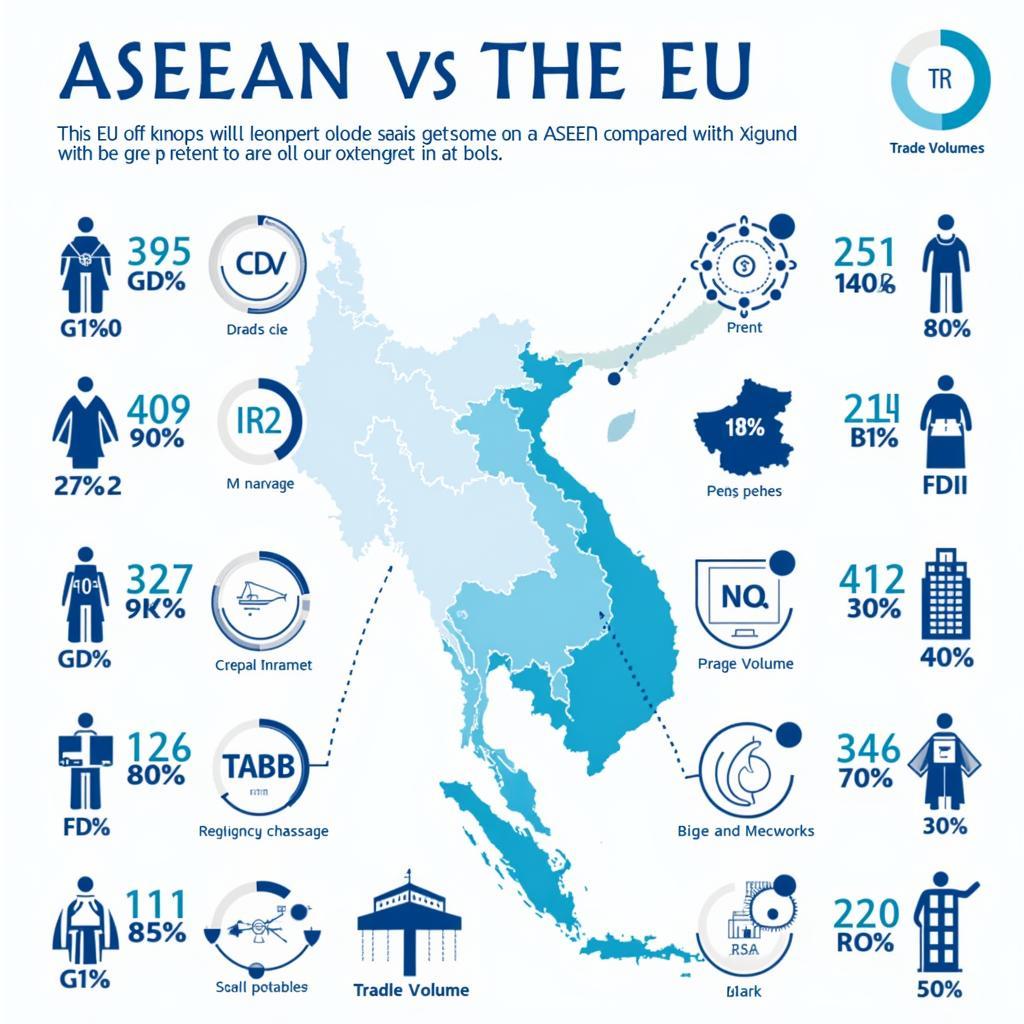Apakah Asean? It’s a question that often arises in discussions about Southeast Asia, reflecting a growing global interest in this dynamic region. ASEAN, or the Association of Southeast Asian Nations, stands as a testament to regional cooperation and integration, embodying the aspirations of over 650 million people across 10 diverse nations.
Established on August 8, 1967, ASEAN emerged from a backdrop of Cold War tensions and regional instability. Five founding members—Indonesia, Malaysia, the Philippines, Singapore, and Thailand—united with a shared vision of fostering peace, stability, and prosperity in Southeast Asia.
More Than Just Geography: The Pillars of ASEAN
ASEAN’s impact extends far beyond its geographical boundaries. The association is built upon three fundamental pillars:
1. ASEAN Political-Security Community (APSC): This pillar prioritizes dialogue and cooperation on political and security issues. It aims to promote peace, stability, and the rule of law within the region, addressing challenges like transnational crime and maritime security.
2. ASEAN Economic Community (AEC): The AEC strives to create a single market and production base, facilitating the free flow of goods, services, investment, and skilled labor within ASEAN. This pillar is key to enhancing ASEAN’s global competitiveness.
3. ASEAN Socio-Cultural Community (ASCC): Recognizing the importance of shared values and identity, the ASCC focuses on fostering a sense of community and promoting collaboration in areas like education, culture, health, and social development.
These three pillars are interconnected and work in synergy to achieve ASEAN’s overarching goals.
ASEAN’s Expanding Circle: From Dialogue Partners to Global Player
Over the years, ASEAN has actively engaged with the international community, expanding its network of partnerships and playing an increasingly prominent role on the global stage. The association has established dialogue partnerships with countries and organizations worldwide, fostering cooperation on a wide range of issues.
 ASEAN Summit Meeting with Dialogue Partners
ASEAN Summit Meeting with Dialogue Partners
Furthermore, ASEAN hosts various forums, including the ASEAN Regional Forum (ARF) and the East Asia Summit (EAS), providing platforms for dialogue and cooperation on regional and global challenges.
“ASEAN’s inclusive approach to regionalism has been instrumental in its success. The association’s ability to bring together diverse nations with varying political systems and economic structures is a testament to its enduring relevance,” says Dr. Maya Kumar, a leading expert on Southeast Asian politics.
Navigating Challenges, Embracing Opportunities
While ASEAN has made significant strides in regional integration and cooperation, it continues to face challenges. These include narrowing the development gap between member states, addressing territorial disputes, and responding effectively to emerging security threats.
However, ASEAN has consistently demonstrated resilience and adaptability in navigating these complex issues. The association’s commitment to consensus-based decision-making, while sometimes perceived as slow, ensures that all members’ voices are heard and considered.
Looking Ahead: ASEAN’s Vision for a Shared Future
As ASEAN looks to the future, it remains committed to its vision of a peaceful, stable, and prosperous Southeast Asia. The association is actively pursuing deeper integration, strengthening its institutions, and promoting innovation and sustainable development.
 ASEAN Youth Exchange Program participants
ASEAN Youth Exchange Program participants
The journey of ASEAN is a testament to the power of cooperation and the shared aspirations of its people. In an increasingly interconnected world, ASEAN’s role in promoting dialogue, understanding, and collaboration is more vital than ever.
FAQ
1. What does ASEAN stand for?
ASEAN stands for the Association of Southeast Asian Nations.
2. When was ASEAN established?
ASEAN was established on August 8, 1967.
3. How many countries are in ASEAN?
There are 10 member states in ASEAN: Brunei, Cambodia, Indonesia, Laos, Malaysia, Myanmar, the Philippines, Singapore, Thailand, and Vietnam.
4. What are the main goals of ASEAN?
ASEAN’s primary goals are to promote peace and stability, accelerate economic growth, foster social progress, and enhance cultural development within the region.
5. What is the significance of ASEAN?
ASEAN plays a crucial role in promoting regional cooperation, economic integration, and cultural exchange in Southeast Asia. It also serves as a platform for dialogue and collaboration on regional and global issues.
For further information regarding ASEAN, you can explore this insightful article: apakah perhitungan a1 asing dan indonesia beda.
Need Help?
Should you require assistance or have any inquiries, our dedicated customer support team is available 24/7 to provide guidance. Reach out to us via:
- Phone: 0369020373
- Email: [email protected]
You can also visit us at our office located at: Thôn Ngọc Liễn, Hiệp Hòa, Bắc Giang, Việt Nam. We’re committed to ensuring your experience with Asean Media is seamless and enriching.

